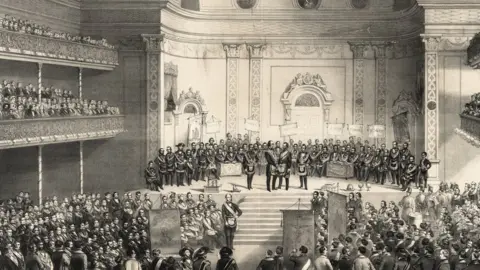Why More People Are Choosing to Join Freemasonfor Influence
Why More People Are Choosing to Join Freemasonfor Influence
Blog Article
Checking Out the Mysteries of the Freemason: What You Need to Know
The Freemason, a term commonly shrouded in intrigue and dispute, stands for a complex tapestry of historical reality and modern misconception. Established in the late 18th century, this secret society was initially rooted in the Enlightenment's ideals yet has because come to be identified with conspiracy theory theories regarding elite control. As we browse the beginnings, key figures, and the plain comparison in between myth and fact, one have to take into consideration exactly how these stories affect contemporary assumptions of power and privacy. What could be disclosed via a more detailed evaluation of these components might test long-held assumptions regarding the shadows that stick around in our culture.
Origins of the Freemason
The beginnings of the Freemason are soaked in a blend of historical intrigue and ideological fervor. Established in 1776 in Ingolstadt, Bavaria, by Adam Weishaupt, the team was originally created as a secret culture intended at advertising Knowledge ideals such as factor, secularism, and the separation of church and state. Weishaupt, a teacher of canon law, looked for to challenge the prevailing authority of the church and state, which he watched as overbearing institutions suppressing intellectual and individual liberty.
The Freemason looked for to hire significant participants from different social fields, consisting of national politics, academia, and the arts, to promote a network committed to these Enlightenment concepts. The society run under a shroud of privacy, utilizing coded language and routines to safeguard its members from mistreatment, especially provided the repressive environment of the time. However, the Freemason dealt with substantial resistance from both governmental authorities and religious establishments, which watched the team as a danger to their power.
Trick Figures and Members
That were the pivotal numbers that shaped the Freemason's very early influence and instructions? The Bavarian Freemason, established in 1776 by Adam Weishaupt, became a feedback to the oppressive societal frameworks of the time. how to become a freemason. Weishaupt, a law teacher, envisioned the company as a way to promote Knowledge perfects such as factor, secularism, and equal rights. His first recruitment efforts included prominent intellectuals, such as Baron von Knigge, who played an essential duty in expanding the group's subscription and business structure.
One more significant figure was Johann Gottlieb Fichte, a famous philosopher whose concepts on nationalism and education and learning resonated with the Freemason's objectives. Fichte was not an official member, his thoughtful foundations influenced the group's belief. Furthermore, figures like the author and philosopher Johann Wolfgang von Goethe were connected with the more comprehensive intellectual movements of the moment, although their direct involvement with the Freemason remains questioned.
These key figures contributed to the Freemason's very early instructions, pressing the limits of political and social idea, while their collective efforts intended to challenge established standards and cultivate an environment of modern adjustment in Europe.
Misconceptions vs. Fact
Lots of false impressions surround the Freemason, often mixing fact with fiction in a means that obscures its true nature. The notion that the Freemason continues to exert substantial impact over globe events is a myth - how to become a freemason.
Another prevalent myth is that the Freemason makes up a network of elite people adjusting worldwide events. In truth, several conspiracy theory theories overemphasize the team's relevance, associating unproven intentions to societal trends and events. This has actually brought about an oversimplified sight of intricate issues.

Modern Analyses
Contemporary interpretations of the Freemason typically reflect more comprehensive societal anxiousness and an attraction with secrecy and power. This contemporary lens often connects the Freemason with conspiracy theories that recommend a covert elite manages world events, manipulating federal governments and economies for their very own gain. Such narratives touch right into a deep-seated suspect of authority, especially in times of crisis or social upheaval.

Moreover, some modern-day analyses mount the Freemason as an allegory for the complexities of globalization and the interconnectedness of influential individuals and organizations. This perspective motivates an essential evaluation of just how power characteristics run in today's globe, highlighting the equilibrium in between openness and secrecy in administration and corporate practices.
Social Influence and Tradition
Influenced by centuries of intrigue, the cultural influence and legacy of the Freemason expand far past its historical beginnings. This secret society, developed in the late 18th century, has actually penetrated different aspects of pop culture, from literary works and film to music and art. The principle of the Freemason has actually evolved into a symbol of conspiracy concepts, frequently standing for a viewed concealed power manipulating worldwide events.
In literature, writers like Dan Brown have woven the Freemason site right into intricate stories, fascinating readers with styles of privacy and power. Films such as "National Prize" and "The Da Vinci Code" even more bolster the appeal of the culture, mixing fact with fiction to produce engaging narratives.
The Freemason's impact also expands right into music, with artists referencing the company to stimulate styles of disobedience and societal critique. This representation has contributed to a fascination with the idea of clandestine groups controlling the levers of power, mirroring social anxiousness about authority and openness.
Eventually, the Freemason's heritage is an intricate tapestry of myth and truth, forming assumptions of secrecy and control in modern discourse. Its enduring visibility in culture underscores mankind's perennial mission for comprehending hidden truths.
Conclusion
The exploration of the Freemason reveals an intricate interplay in between historical truths and contemporary myth-making. Established in the link Enlightenment age, this society aimed to test oppressive frameworks, yet its heritage has been eclipsed by conspiracy theory concepts that suggest elite adjustment. Recognizing the differences between the original suitables and modern analyses is crucial for understanding the enduring fascination with the Freemason and its considerable impact on cultural stories bordering power and privacy in society.
Report this page